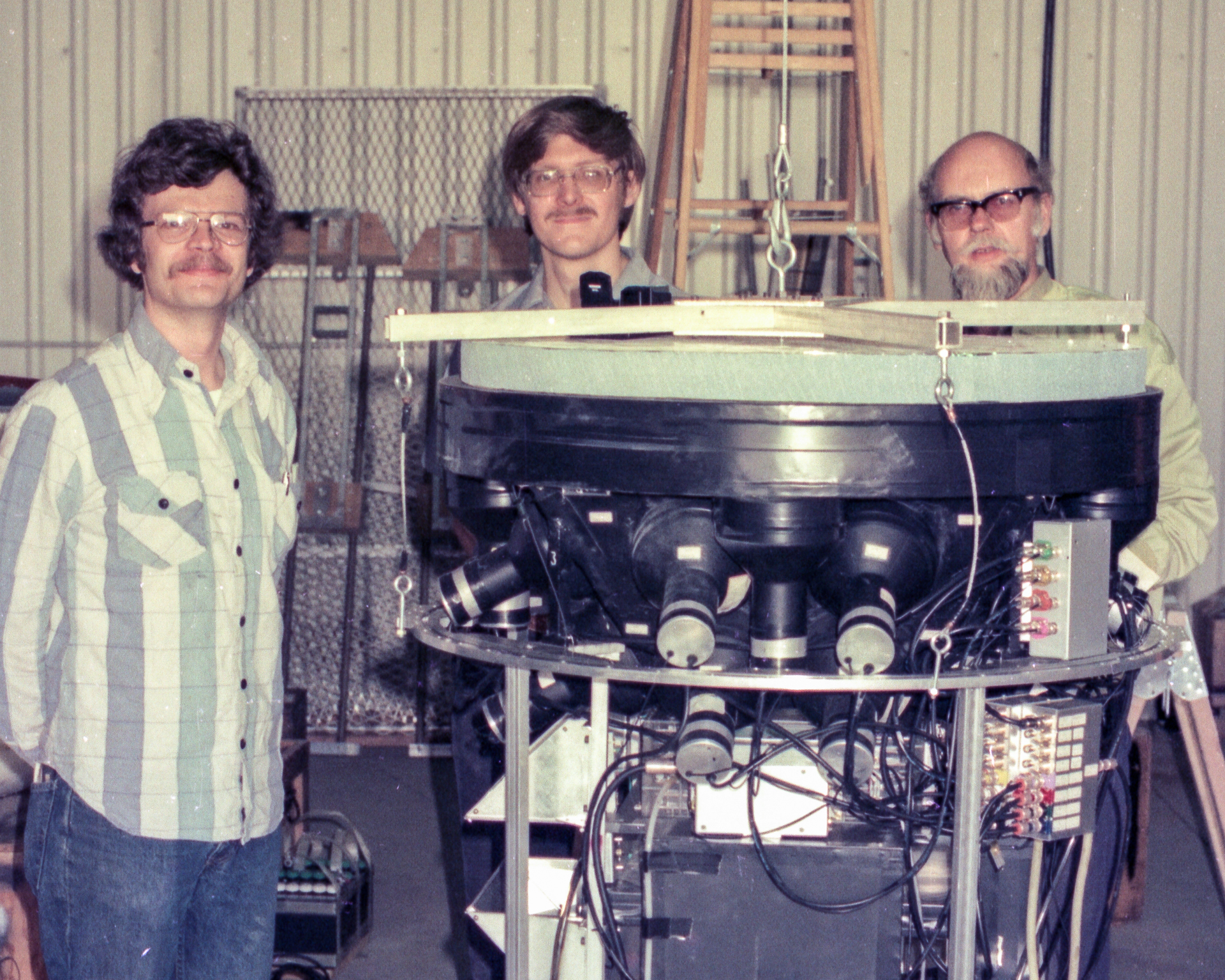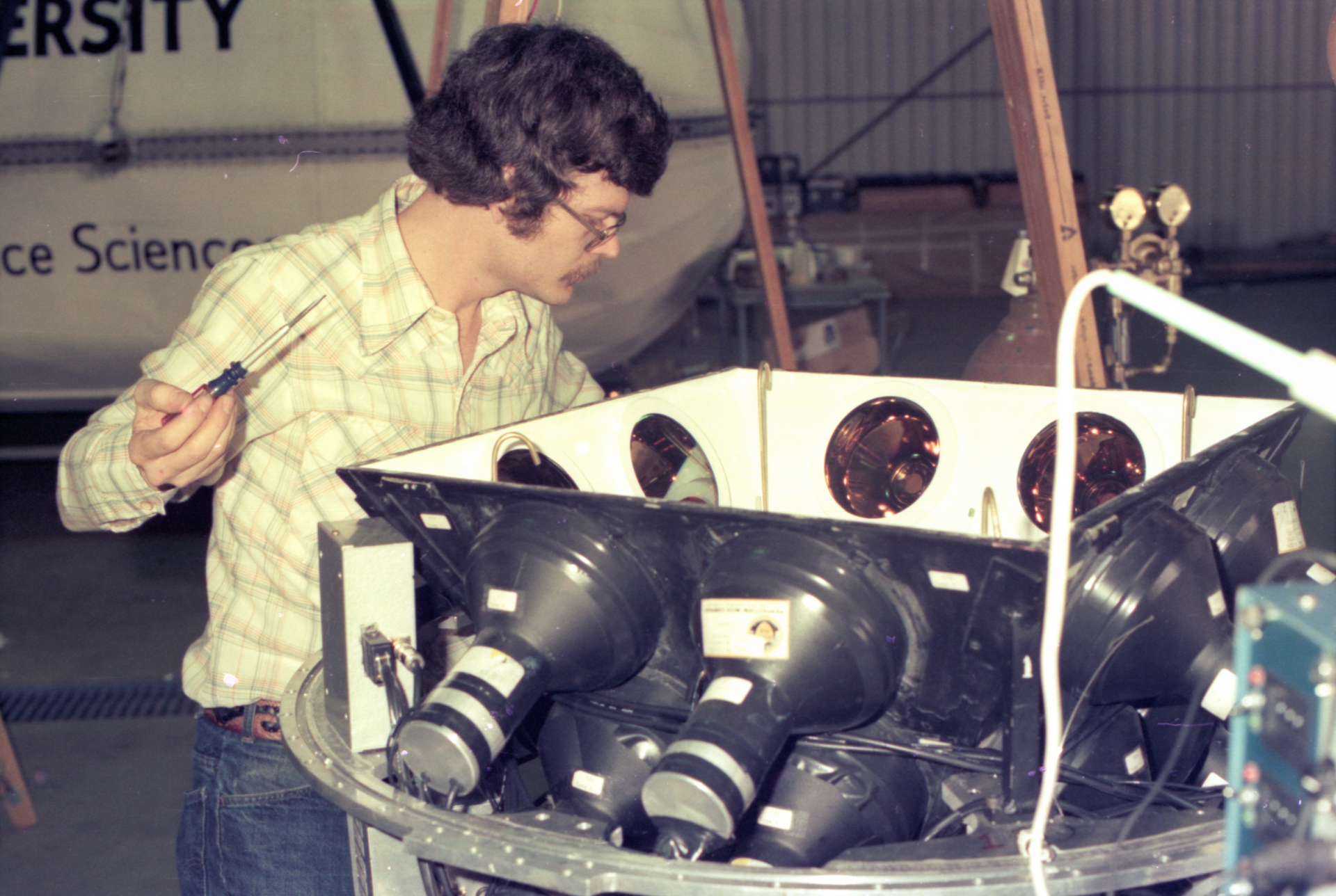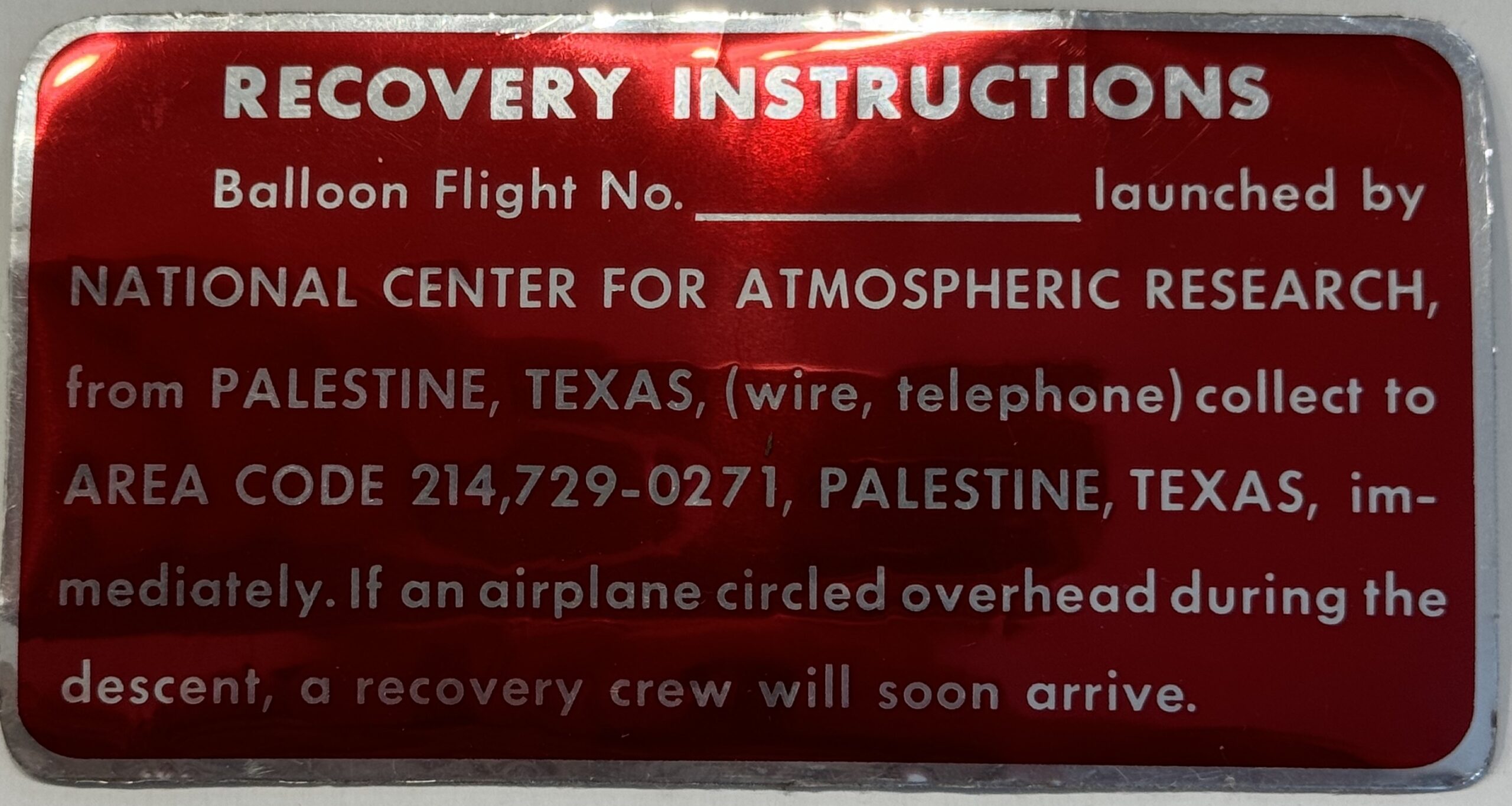This is the beginning of a series of posts that describe the launching of a scientific balloon experiment in 1977. The story was reconstructed after encountering some old photos from that event. Reminiscences can run rather long, so I have partitioned it into more manageable segments. I hope you enjoy this snapshot of the scientific and cultural times of the 1970s.
Background
While attending the University of Minnesota, one of my part-time jobs was as a lab assistant in the Physics and Astronomy Department. I worked in a laboratory dedicated to the cosmic ray research group led by professors Phyllis Freier and C J (Jake) Waddington. In the group were lab manager Chuck Gilman and graduate student Bob Scarlett who were preparing an instrument to be launched and held aloft by a balloon to gather data about cosmic rays, a (still) mysterious radiation of high energy particles from deep outer space.

The Instrument
I knew little about the physics involved, but I understood the basic goal: to measure the relative abundances of elements in the stream of cosmic rays that were constantly raining down on us from space. Just what were these elements, including their isotopes? An accounting of the relative numbers of these energetic particles would be an important clue to understanding where they came from and how they got here.
So this was an experiment to identify isotopes in the population of cosmic rays. It is not easy to detect cosmic rays, and it is even harder to distinguish their isotopes. But this is what the experiment aimed to do, and so it acquired the title “Cosmic Ray Isotope Separation Instrumentation System”. CRISIS was its moniker.
I can’t provide a detailed description of the instrument here, but the core of the detector was a “nuclear emulsion”, a thick sandwich of hundreds of layers of specialized photographic film. When a cosmic ray particle passes through the film, it leaves a trail of activated molecules of silver halide, which become metallic grains of silver when developed. Examining these trails under a microscope reveals information about the particle’s energy. Other detectors in the instrument used scintillation and Cerenkov light to obtain further information about the particle’s charge and mass.
I worked most closely with Chuck Gilman, who called himself the chief bottle washer, but to me seemed to be the architect and engineer behind the integration, function, and calibration of the instrument, and responsible for its eventual mission. He was friendly and energetic, an articulate expert about every aspect of this complex machine. He was also patient, and tolerant of my persistent questions as I tried to overcome my weak understanding of cosmic rays and the equipment involved in measuring them. He provided many informal lessons in physics and circuits, that augmented the courses I was taking across the street in the electrical engineering department.
I helped with building circuits, making test fixtures, taking measurements, whatever was needed and could be done by an inexperienced undergraduate without risking too much damage to the complex instrument being assembled.
I spent more than a year as that inexperienced undergraduate. When I graduated and was no longer eligible for a student job, Chuck, thinking I might still be useful, recommended me for a part-time position to continue working in the lab. Jake (who was always “Dr Waddington” to me), offered me the job. This was during the leadup to the spring of 1977, when the instrument was scheduled to be launched from a site in South Dakota to finally obtain the measurements it had been created for. I was pleased to be invited to be a small part of this project and accepted the offer.
My contributions were purely mechanical. I constructed a high-voltage power supply (that Chuck had designed) which charged the layers of the spark chamber and powered the photomultiplier tubes. I built a digital readout for counting the pulses from an XY encoder that measured cosmic ray trajectories. I was also assigned to craft the styrofoam insulating panels to encase the instrument package and protect it from the extreme cold of the upper atmosphere. These were all important tasks, but at the time, I didn’t realize how they all played in the overall operation of the instrument; they were just work assignments to figure out and hopefully keep me in good standing in my new professional, if part-time, job.

Why South Dakota?
There were several constraints on this experiment. The goal was to measure the isotopes of cosmic ray particles which are bombarding us all the time from deep space. But these particles are deflected by the Earth’s magnetic field, which in combination with their absorption by our atmosphere is a fortunate condition that has allowed the evolution of life. The overall flux of high energy radiation is much diminished by the time it reaches us at the surface.
The magnetic field also explains why aurora, triggered by energetic particles from the Sun, are seen only in the far north; everywhere else they are deflected away. And so it is with cosmic rays. Their intensity diminishes with distance from the magnetic poles. In Minneapolis, at latitude 45, we are about the furthest south one can occasionally see the northern lights… and to detect the cosmic ray particles we were looking for. In order to gather enough relevant data, the detector would have to be north of this latitude.
There was another constraint. This experiment package would be the payload of a balloon to lift it above most of the atmosphere. But balloons are subject to the whims of the wind. Ideally there would be no wind and the balloon would lift the detector to the edge of space, collect data for as long as the power supplies held out, and descend back to its original launch position where we would collect the nuclear emulsions and data recordings from the instrument.
But there really isn’t a zero wind condition on our planet. The jet stream exists at about the altitude of commercial airliners, and is in effect pretty much all the time, though its high velocity core shifts around during the year. The balloon would have to ascend through it.
Above the jet stream, in the stratosphere, are more high-speed winds whose direction is seasonal, traveling west to east in the winter, and east to west in the summer. This is where the balloon would reach its “cruising” (i.e. data collecting) altitude. It would stay in those winds until it drifted to the limits of our recovery range – it needed to remain above land so we could retrieve it. Launching from the center of the North American continent, we had a pretty good recovery range.
We wanted as much time as possible to accumulate data during the flight, and there were two times when the upper air winds were low: in the spring and fall, during what is called “turnaround”. As the directions changed between winter and summer airflows, the wind speeds diminished.
There is one more constraint on balloon launches. Sometimes they fail. And if the balloon fails, the payload crashes to Earth. It could happen right away at launch or any time after, and so to minimize the risk of thousands of pounds of scientific gear falling on something or someone, it is standard practice to launch over low-density population areas. Minneapolis did not qualify.
Magnetic fields, wind patterns, and the need to avoid people: this is why we were in Aberdeen South Dakota in April of 1977.



This is an interesting story! It is great that you can go back 50+ years and tell it. I can only come up with snipits of my life as a student.
Well, it was one of those life-impacting events, or at least one that left a lasting impression, as I hope you see in the upcoming posts. Still, I needed some help in reconstructing it– my memory is not that good either, and I had to follow some clues and do some research to fill in the gaps.